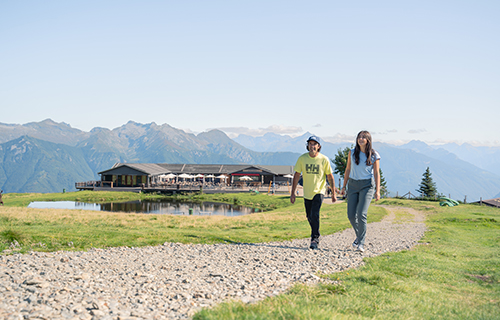Monte Tamaro & Helly Hansen
A Swiss-Norwegian partnership
Action and adventure in the mountains can only be found on the ski slopes? Monte Tamaro and Helly Hansen prove the opposite – each in its own way. Monte Tamaro as a real adventure mountain: with the cable car and Coaster Bobs, the Adventure Park, the Zip line and much more, special experiences for the whole family are guaranteed here. Outdoor sports enthusiasts also get their rewards thanks to hiking trails and mountain bike trails. That’s the keyword for Helly Hansen, because the Norwegian brand offers high-performance outdoor and workwear that you can rely on in any situation. The perfect combination, which now manifests itself in a Swiss- Norwegian partnership.
Helly Hansen
Since the company was founded in Norway in 1877, Helly Hansen has continuously developed clothing that meets professional demands and makes people feel and stay alive. Through accumulated experience of living and working in one of the harshest environments on earth, Helly Hansen developed real market firsts, such as the first soft, waterproof fabrics some 140 years ago. Other breakthroughs include the production of the first fleece fabrics in the 1960s, the first technical baselayers with Lifa® Stay Dry technology in the 1970s and today’s award-winning and patented H2Flow temperature regulation system. Helly Hansen is the market leader in technical and high-performance sailing and ski wear as well as premium workwear. Not only Olympic participants or national teams trust in Helly Hansen, but also more than 50,000 professionals, 200 ski resorts and mountain guide associations worldwide. Outdoor professionals and enthusiasts rely on Helly Hansen’s functional clothing, base layers, sportswear and footwear, which are sold in more than 40 countries.
Monte Tamaro
Monte Tamaro can also look back on a long history. Egidio Cattaneo founded the Monte Tamaro company in 1966 and it began year-round operations in 1972.The strong season was the winter one, but from the 1980s onwards the winters became uncertain and the necessary snow cover was no longer guaranteed. The summer season was also developed, and in 2003 it was finally decided to abandon the winter season. A strategy that has proven successful for the family-run company to this day.



